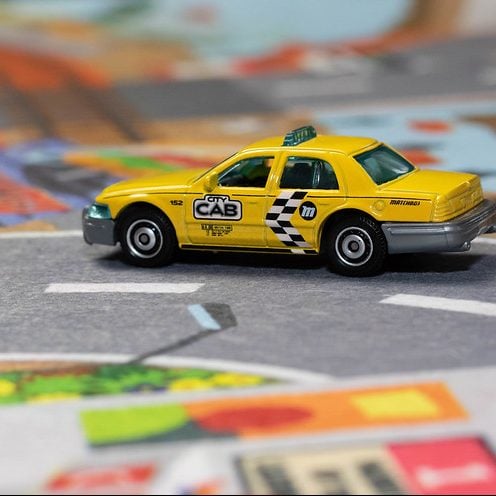In Uberland: How algorithms are rewriting the future of work, technology  ethnographer Alex Rosenblat tackles the political realities of the Silicon Valley mythos through one of its most successful companies. Rosenblat spent just over four years from 2014 to 2018 conducting research with drivers for Uber and Lyft – Uber’s slightly smaller cousin operating in North America. The result is a detailed ethnographic work which centres on the diverse human stories of drivers whose labour is embedded in a complex web of big data, surveillance and the economic and cultural rise of the ‘tech start-up’.
ethnographer Alex Rosenblat tackles the political realities of the Silicon Valley mythos through one of its most successful companies. Rosenblat spent just over four years from 2014 to 2018 conducting research with drivers for Uber and Lyft – Uber’s slightly smaller cousin operating in North America. The result is a detailed ethnographic work which centres on the diverse human stories of drivers whose labour is embedded in a complex web of big data, surveillance and the economic and cultural rise of the ‘tech start-up’.
Thematically, Uberland follows three main ideas. First, the author highlights how Uber uses its technologies to nudge, and sometimes outright force, the behaviour of its drivers. Second, she demonstrates how drivers themselves navigate algorithmic control and the spaces in which they gather and assert autonomy. Third, and most importantly, the reader is introduced to how the complex politics of the first two serve to undermine Uber’s carefully constructed narrative. Together the book paints a complicated picture of the uneven realities of the gig economy set against the glossy sales pitch of Uber as the future of work.
I will address these ideas in turn. The actual number of Uber drivers worldwide is not an easy sum to arrive at. In late 2018, the company boasted of 3.8 million active drivers across 63 countries. However thanks to the tangled web of Uber’s “flexible” infrastructure, there’s an enormous diversity in experience when it comes to being an “Uber driver”. This 3.8 million figure only counts “active” rather than “inactive” drivers, and it’s difficult to tell how many of these people would actually describe themselves as full-time Uber drivers. Despite an enormous diversity of experience, as Rosenblat observes, every single one of these driver’s experiences is funnelled through the same app.
Gamification of work: a faceless boss
The Uber app is key to the driver’s experience, and like all algorithms, it is not a neutral interface. The app acts as a faceless boss. It is capable of responding to real-time data that takes everything into account from traffic, user-demand and shifts in company policy. The app uses this data to push drivers to work longer hours, and can punish or incentivize accordingly. The result is a tapestry of algorithmic manipulation which veers into the dystopian. It rewards drivers with positive messages when it detects “smooth brakes and accelerations”; or it can bombard drivers with messages such as “your next rider is going to be awesome!” if they attempt to log out of the app.
This gamification of work is a pervasive symptom of the gig economy. Apps that profit from human interaction often look to elements of digital gaming and gambling to find new strategies for holding our attention. As seen with the Uber app, this can involve tangible interface designs like the idea of unlocking achievements and rewards. Some view these kinds of gamification as the secret to a more engaged and motivated workforce (see Dale 2012). But Rosenblat shows this can also deploy the more insidious elements of gaming to keep drivers engaged. The app essentially “games” its drivers by obscuring as much as it reveals.
The app acts as a faceless boss, responding to real-time data and using it to push drivers to work longer hours, and can punish or incentivize accordingly. The result is a tapestry of algorithmic manipulation which veers into the dystopian
An example of this is the phenomenon of “phantom cabs” where the Uber app maps shows groupings of drivers in neighbourhoods where, in reality, there are none. These ghost cars represent an attempt to manipulate the appearance of surges in popularity, and in doing so, uses the app interface to distort reality. But these artificial surges can also act as algorithmic shields protecting their actual drivers from potentially hostile regulatory authorities.
The second theme is the humans at the centre of the Uber story. Rosenblat meets many drivers who are satisfied with Uber. Some of these people, like Mariana – a mother of four who migrated from the Dominican Republic – are held up as examples of migrant workers who feel that the benefits of the job outweight the precariousness of the sharing economy. When Rosenblat meets Mariana, she tells her that she appreciates the flexible work hours because it lets her see her family, and that she enjoys getting to meet new people in a way that she could not in her former job as a childcare worker.
But ultimately, the actual experience of drivers does not match this rosy picture. Rosenblat stresses that how Uber imagines its drivers and its workers is fundamentally different from the driver’s experience. I will elaborate on this below, but for now, suffice to say that the high attrition rates of drivers speaks to the overall lack of satisfaction with the job. As Rosenblat notes, more than half of the participants in the gig economy are likely to quit within a year.
‘Conversations with taxi drivers’
I’d like to point out the storytelling trope of “conversations with taxi drivers”. These aren’t Rosenblatt’s only source throughout the ethnography: the analysis is supplemented by secondary data from forums and podcasts, which she seems to be active on as a researcher and advocate of drivers’ rights. Reading this book gives the impression that she cares deeply about her informants and has struck up genuine friendships with many of them. However, there’s a power imbalance in these conversations and the relationships developed around them that goes unaddressed. At the end of the day, she is the one with the capital and mobility to be a regular Uber passenger, and this gives her power over the drivers, whether this is a power of representation in her ethnography, or the power of a 5-star driver review.
Rosenblat’s ethnography illustrates how the Uberland ideology flourishes in spite of a less-than-satisfying reality.
Many of these drivers are drawn to the kind of mobility and autonomy that Rosenblat represents as an ethnographer who travels the country riding Ubers. For drivers, this is wrapped up in the idea of “entrepreneurship”. The ethnography shows how this image is intentionally crafted by Uber, and is illustrative of the third theme: Uber’s own tech positivist narrative. Uber frames itself as a company altruistically paving the way towards the future of work. Both this and the experience of drivers are driven by a similar force, that of stories: on one level the stories of drivers, on the other the stories concocted by Uber.
However, technology itself is also a language of power. Rosenblat writes that where “Uber truly shines [is] when it uses the power of rhetoric to make the case that its sharing technology can create entrepreneurship for everyone” (2020:74). This power is inscribed in the algorithms that operate the app, but it’s also part of their intentional marketing. Uber drivers become “consumers” of Uber technology and are depicted in glossy billboard portraits as upwardly mobile millennials building their own future.
Researchers and technology: the ethics of funding
In Uberland, we see moments when Rosenblat breaks out of the ethnographer role and becomes a journalist. Rosenblat broke the “phantom cabs” story for Vice in 2015. But in becoming a journalist here she raises some interesting questions about the role of ethnographers when it comes to documenting big tech. Undertaking this ethnography has required her to confront the inequalities of the Uber experience. She has the power to use journalism to expose unethical labour practices. However, she is simultaneously feeding the machine as a consumer.
Is it possible to undertake this kind of ethnographic research without incidentally perpetuating its power? In general, Rosenblat is transparent about where she draws the line. She positions herself throughout as something of an adversarial force against Uber, even detailing a scene in which the company tries to recruit her as a means of silencing her research.
There is also a broader issue at play. Rosenblat is situated in the wider entanglement of tech research and big tech. She is a researcher at the Data & Society Research Institute, which has attracted criticism because its director is a former Microsoft researcher and was initially funded by a Microsoft grant. This problem is not unique to Data & Society, but it links back to bigger discussions around the ethics of funding for many of these technology research institutes.
The Future of Work? Uber and the Pandemic
This book comes at an eerily prescient point. As Rosenblat points out, the sharing economy has its roots in the 2007-08 recession. During this time in the US the national unemployment rate was around 10% and many working-class towns and cities were economically destroyed. Uberland gives us some hints as to what the sharing economy might look like amid a pandemic-triggered recession. On the one hand, amid the disillusionment of big tech and the mounting court cases of drivers against Uber, the current circumstances have the potential to expose the doublethink once and for all. Uber’s recent announcements, such as concessions to give drivers sick leave, directly contradict the narrative of “micro-entrepreneurs”. But as the New York Times reports, it has also intensified pre-existing issues with unethical labour practices associated with platforms like Uber and Amazon.
Rosenblat’s ethnography illustrates how the Uberland ideology flourishes in spite of a less-than-satisfying reality. And it flourishes in a context where tech companies don’t actually need to be profitable in order to grow. It might not actually matter if nobody can catch an Uber in a lockdown. Whether it pushes forward with its cousins like Ubereats; or grows new platforms implementing imaginative ways of capitalising on downturn, the spread of the Uberland ideology seems a likely possibility.
References
Dale, S. (2014) Gamification: making work fun, or making fun of work? Business Information Review 31(2): 82-90.
Featured Image: Yellow Taxi Cab (cropped) by Marco Verch (CC BY 2.0)




At the end of the day, she is the one with the capital and mobility to be a regular Uber passenger, and this gives her power over the drivers, whether this is a power of representation in her ethnography, or the power of a 5-star driver review.
Where does she say, that all her experiences as an ethnographer is complicit with giving 5-star reviews or that her drivers are inclined to understand her presence as part of a power relationship? At what point does she try to be deceptive in her intentions? How would you handle the research?